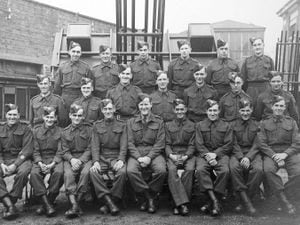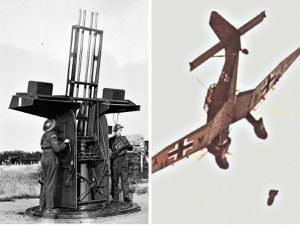Triumph and tragedy in the hush-hush 'Hole'
The top secret underground factory at Drakelow escaped the attentions of the Luftwaffe – but that doesn't mean it was spared wartime casualties.
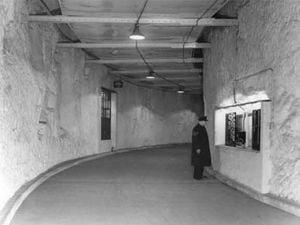
In our recent feature about the subterranean complex beneath Kingsford Country Park, between Kinver and Wolverley, we told of tragedy during the operation to carve it out from the hillside.
During the construction of the underground aircraft engine factory there were several accidents, resulting in the deaths of six men and one woman. The first and most traumatic series of deaths happened on October 31, 1941.
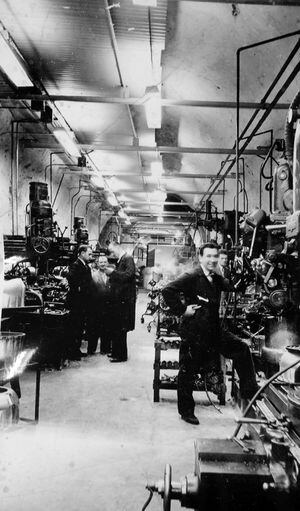
While blasting in Tunnel 1, the roof suddenly caved in without warning.
Harry Depper and two of his colleagues who were working in the tunnel were crushed to death by the falling rock. Mr Depper was buried in a local cemetery on November 5, 1941, but we said in our feature that the names of his two colleagues are not known.
Thanks to Martin Briscoe, from Fort William in Scotland, who read our feature online, we can now put that right and honour their sacrifice – because the names of the other victims are indeed known.
"The comment about the other names not being known intrigued me so thought I would have a look – I have a subscription to the British Newspaper Archive so often can find things there," said Martin, who is a member of Subterranea Britannica, a group for people interested in underground structures and spaces, and went to Drakelow some years ago.
He uncovered a report of the subsequent inquest held at Kidderminster which was published in the Birmingham Daily Gazette of November 5, 1941.
The three labourer victims were named as Robert Stephenson, aged 59, of Castle Street, Kinver; 39-year-old Harry Depper, of Mander Street, Wolverhampton; and Fergus O'Driscoll, age not known, from Dublin.
They were, the report said, crushed to death by a fall of rock on "a factory estate near Kidderminster".
It added: "The men entered an excavation in which the roof had been fired, and afterwards tested. About three tons of rock and sand suddenly collapsed through an invisible soft vein. A verdict of 'accidental death' was recorded."
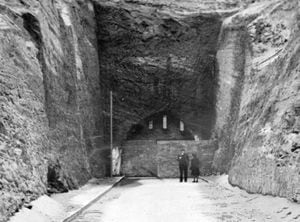
Also getting in touch with us was Joe Robinson, of Drakelow Tunnels, a group seeking to renovate the complex.
Joe said: "The site as a whole is going through a lot of change after our planning appeal to convert the site into a bonded warehouse and museum was approved in January last year. We have lots of interesting stories, archives and pictures of the site which we would love to have in our museum to share with the public."
Star readers were told, probably for the first time, about the existence of the underground complex – the location was not revealed due to wartime censorship – in a feature carried in the paper in April 1943, which said that our "special correspondent" and photographer who had been allowed to look around were escorted out afterwards by a "tall, guardsmanlike ex-police sergeant."
That prompted Joe to send us a picture of a policeman at the complex who he thinks might be the officer referred to.
Our own Peter Rhodes was also able to shed some personal light on these dark underground chambers.
"Its later use was as a sub-regional command centre in the event of nuclear war. My Territorial Army signals troop provided communications. There's a description of a Cold War exercise at Drakelow in my book, For a Shilling a Day," said Pete.
The book tells of the exercise in the summer of 1980.
"It was known to us simply as The Hole," wrote Pete, at the time a TA officer commanding a Royal Signals troop whose wartime role was to survive the nuclear attack, restore communications, and "assist the civil authorities in the recovery period".
"It was breathtaking. From vast central corridors hewn out of the rock, side galleries ran endlessly into the darkness. A quarter of a million square feet, hidden 200 feet beneath Kinver Edge. There was a huge, clattering kitchen area, sleeping accommodation, a mass dormitory, officials' quarters, restrooms, showers, lavatories and radiation-decontamination rooms."
He went on: "Our week-long exercise brought together government scientists, police, fire and ambulance chiefs and local council officials (who rather spoiled things by going home at 5pm sharp every evening).
"My troop provided the communications, manning a bank of dusty, ancient Creed teleprinters and an equally venerable Marconi radio."
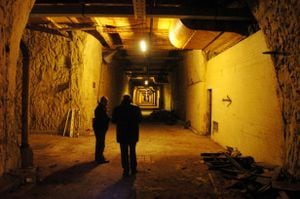
Technically, the exercise went well, although they were relieved to emerge and breathe fresh air once more at the end of it.
"We were told the location was top secret. But was it? Before the exercise, one of our TA sergeants drove to Wolverley to make quite sure we found The Hole on the day. He got lost and stopped a passerby to ask directions to Wolverley.
"'You looking for the secret place?' inquired the local."


